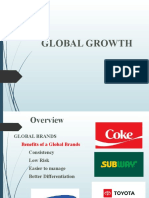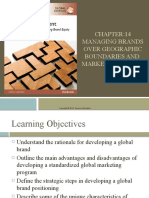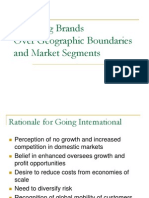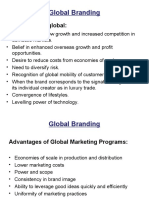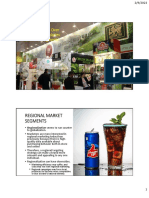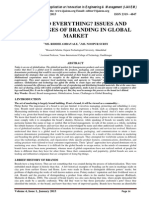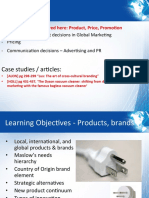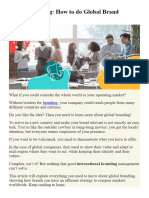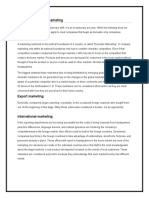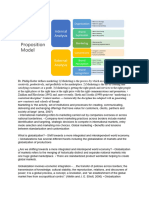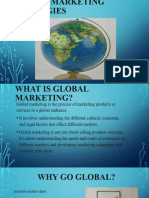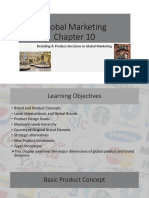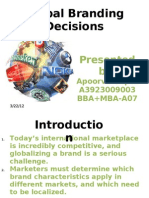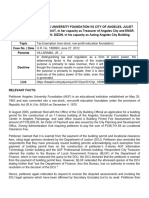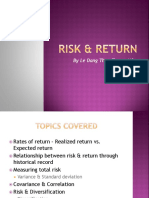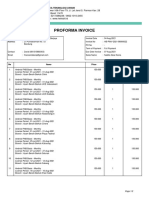0% found this document useful (0 votes)
36 views22 pagesUnit 3
The document discusses the importance of global branding, outlining the advantages and disadvantages of expanding into international markets. It defines global branding and emphasizes the need for a balance between standardization and customization in marketing strategies, considering cultural nuances and consumer behavior. Key factors for successful global branding include maintaining a unified brand image, understanding local markets, and establishing effective marketing infrastructure.
Uploaded by
1911.sahilsharmaCopyright
© © All Rights Reserved
We take content rights seriously. If you suspect this is your content, claim it here.
Available Formats
Download as PPTX, PDF, TXT or read online on Scribd
0% found this document useful (0 votes)
36 views22 pagesUnit 3
The document discusses the importance of global branding, outlining the advantages and disadvantages of expanding into international markets. It defines global branding and emphasizes the need for a balance between standardization and customization in marketing strategies, considering cultural nuances and consumer behavior. Key factors for successful global branding include maintaining a unified brand image, understanding local markets, and establishing effective marketing infrastructure.
Uploaded by
1911.sahilsharmaCopyright
© © All Rights Reserved
We take content rights seriously. If you suspect this is your content, claim it here.
Available Formats
Download as PPTX, PDF, TXT or read online on Scribd
/ 22


